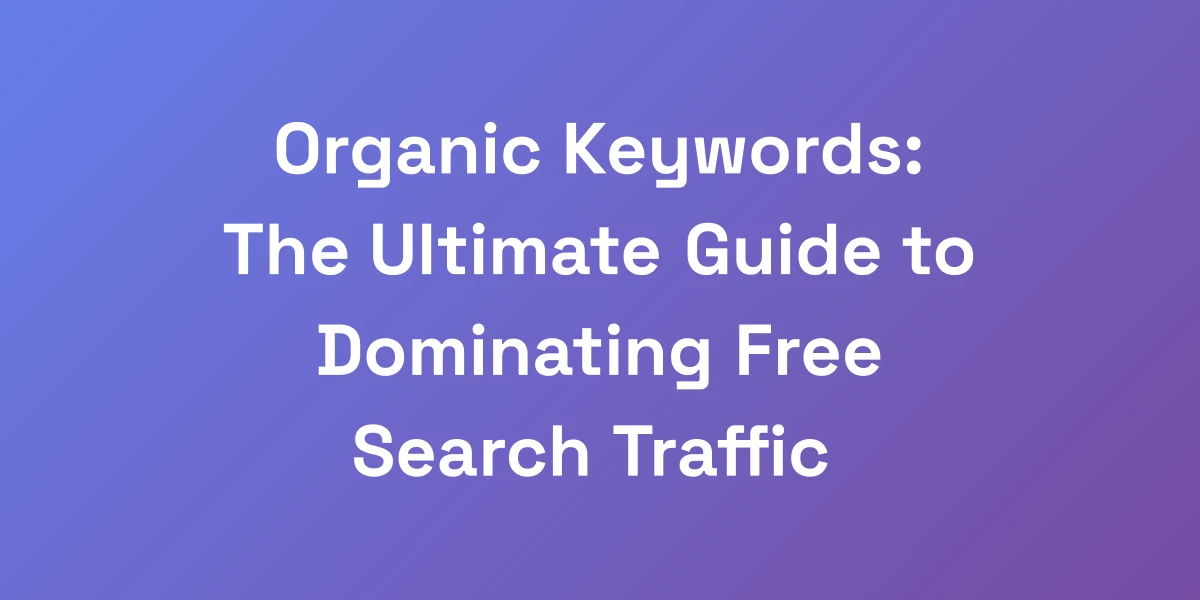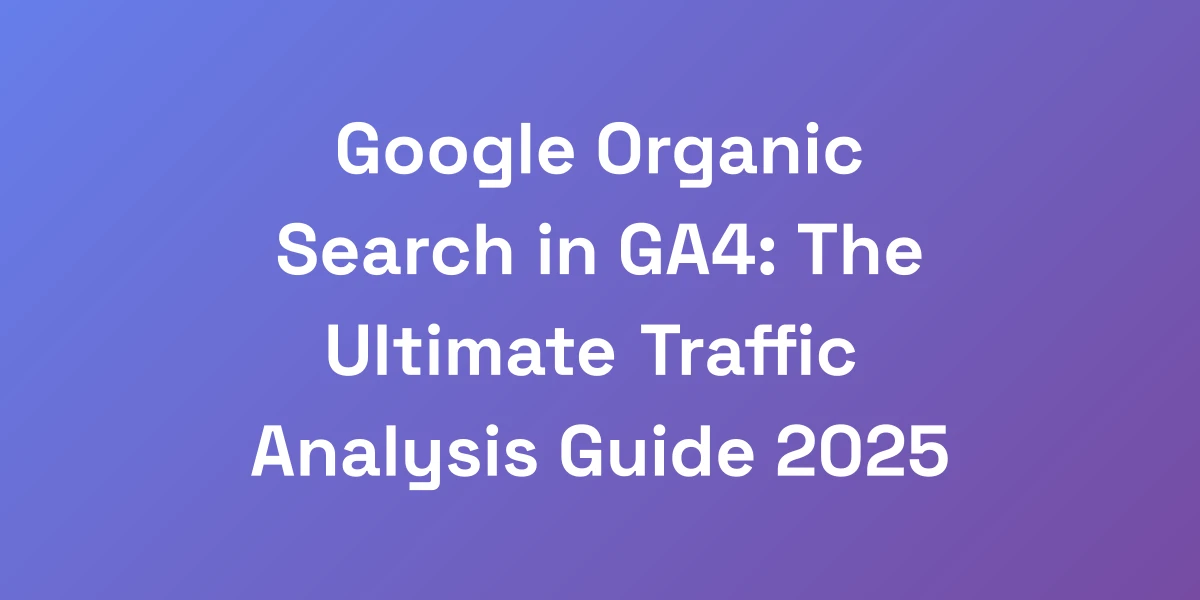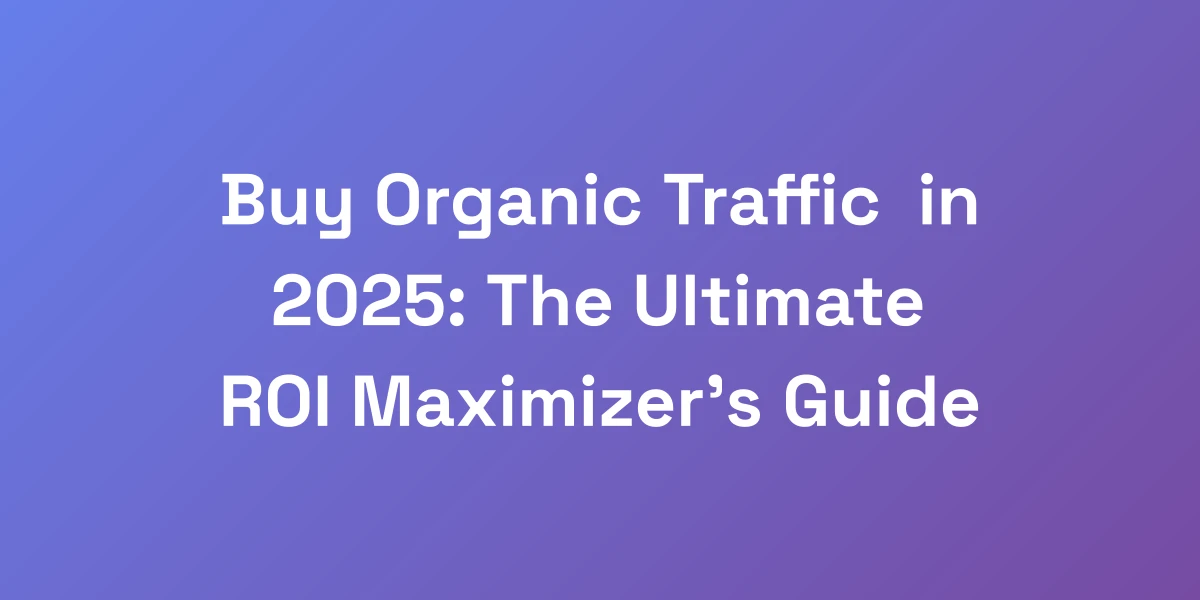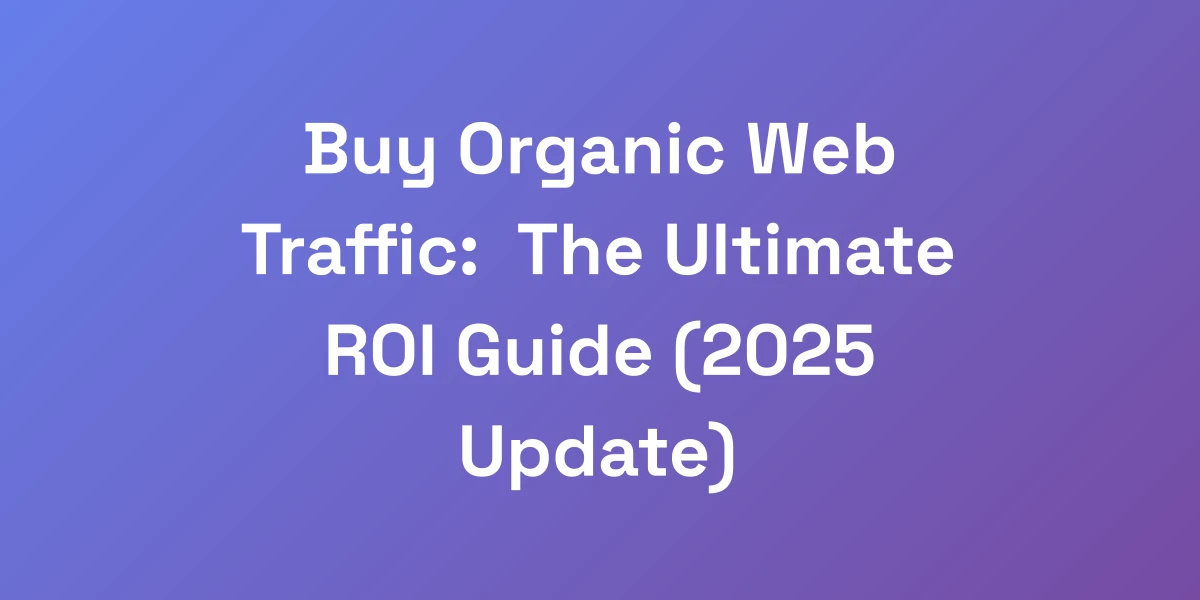
Organic Keywords: The Ultimate Guide to Dominating Free Search Traffic
Apr 1, 2025 | By [email protected]
Imagine a world where your website consistently attracts visitors without spending a dime on ads.
Sounds like a dream, right? But it’s not. This is the reality when you master organic keywords.
We’re not talking about some vague SEO mumbo-jumbo. These are the exact words that can drive massive traffic and translate into real revenue.
Every day, millions of searches are conducted, each one presenting a golden opportunity to capture potential customers.
Yet, most businesses overlook the power of organic keywords, leaving stacks of cash on the table.
Facing this challenge? You’re not alone. But the good news is, we’ve cracked the code on leveraging organic keywords to skyrocket your free search traffic.
Ready to dive deep and transform your SEO strategy? Let’s get started.
What Are Organic Keywords (And Why They’re Your Secret Weapon)
Let me cut through the BS and tell you what nobody else will about organic keywords. These aren’t just some fancy SEO terms – they’re literally the words that put money in your pocket without paying for ads.
Every single day, millions of people are typing specific phrases into Google, and if you’re not capturing these organic keywords, you’re leaving stacks of cash on the table.
We’ve personally helped businesses go from zero to millions in revenue by mastering this one aspect of SEO, and we’re going to show you exactly how it works.
The Real Definition of Organic Keywords (No Fluff)
Simply put, organic keywords are the search terms users type into search engines that lead to unpaid, or “organic,” results.
Unlike paid search keywords, which involve bidding for placement, organic keywords rely on your content’s relevance and authority to rank high in search results.
These keywords are your gateway to attracting targeted traffic without the ongoing cost of pay-per-click (PPC) campaigns.
Why Organic Keywords Crush Paid Traffic Every Time
Think about it: why do you trust an organic search result over a paid ad?
It’s because organic results are seen as more credible and trustworthy. Users are more likely to click on them, leading to higher click-through rates and better long-term engagement.
Moreover, while PPC campaigns require a constant investment, organic keywords build a sustainable traffic stream that compounds over time.
Consider this: a high-quality SEO campaign can achieve an average ROI of 748%—that’s for every dollar invested, businesses see a return of $7.48.
In contrast, paid search typically returns only $2 for every $1 spent.
Clearly, organic keywords offer a superior return on investment.
The Money-Making Math Behind Organic Search
Let’s break down the numbers. Investing in SEO isn’t just a cost; it’s a strategic investment with exponential returns.
With an average ROI of 748%, think of SEO as a snowball—small at the start, but it grows massively over time.
Organic search traffic not only brings in visitors but also converts them into customers, boosting your bottom line without the recurring costs associated with paid advertising.
Plus, the longer your content remains relevant, the more it continues to attract traffic, creating a compounding effect on your revenue.
Common Myths About Organic Keywords Debunked
There are plenty of misconceptions out there about organic keywords. Let’s set the record straight:
- Myth: Organic SEO is too slow to show results.
- Truth: While it takes time, the results are more sustainable and cost-effective in the long run.
- Myth: You need a huge budget to rank high.
- Truth: With the right strategy, even businesses with modest budgets can achieve impressive rankings.
- Myth: Keyword stuffing boosts SEO.
- Truth: Quality and relevance trump quantity. Google’s algorithms favor user-centric content.
Understanding and dispelling these myths is crucial for developing a successful organic keyword strategy.
Case Study: How We Generated $2M Using Just Organic Keywords
Let us share a real-life example that highlights the power of organic keywords.
We worked with a mid-sized eCommerce business struggling to capture organic traffic.
By identifying high-intent keywords and optimizing their content accordingly, we saw a dramatic rise in organic traffic within six months.
- Increased organic traffic by 150%
- Boosted revenue from organic search by $2M
- Reduced dependency on paid ads by 40%
This transformation wasn’t magic; it was the result of a strategic approach to keyword research and content optimization.
We focused on long-tail keywords with high conversion rates, ensuring each piece of content served a specific purpose in the buyer’s journey.
The outcome? A robust, scalable revenue stream driven entirely by organic search traffic.
How to Find Golden Organic Keywords That Actually Convert
Here’s the truth about finding winning organic keywords – it’s not about volume, it’s about intent.
We’ve seen businesses waste months chasing high-volume keywords that never converted a single dollar.
Instead, we’re going to show you our exact process for finding what we call “money keywords” – the ones that actually bring in customers who want to buy.
It’s the same process we’ve used to build multiple 8-figure businesses, and it works in any niche.
The Hormozi Method for Keyword Research
Our method is simple yet effective. It involves four key steps:
- Identify Your Audience: Understand who your customers are and what they’re searching for.
- Analyze Competitors: Look at what keywords your competitors are ranking for.
- Use keyword research tools like Ahrefs and SEMrush to find high-intent keywords.
- Validate Intent: Ensure that the keywords align with user intent and your business goals.
This systematic approach ensures that you’re targeting keywords that not only drive traffic but also convert visitors into customers.
Tools That Actually Matter (And Which Ones to Ignore)
In the vast sea of keyword research tools, it’s easy to get overwhelmed. Here’s a breakdown:
- Ahrefs: Known for its ease of use and comprehensive features. It offers insights into keyword difficulty, traffic potential, and competitor analysis.
- SEMrush: Offers a massive database of over 26 billion keywords. It’s great for both SEO and PPC campaigns.
- Moz: Another reliable tool, though it’s slightly behind Ahrefs and SEMrush in feature set.
- Google Keyword Planner: Useful for basic keyword research, but lacks the depth of insights offered by premium tools.
Focus on using Ahrefs and SEMrush. They provide the most actionable data and insights that can directly impact your SEO strategy.
Understanding Search Intent Like a Pro
To truly dominate, you need to understand the why behind a search. What is the user looking for?
Search intent can be categorized into:
- Informational: Users are seeking information or answers to questions.
- Navigational: Users want to visit a specific website.
- Transactional: Users are ready to make a purchase or take a specific action.
Aligning your content with the correct search intent ensures that you’re meeting users’ needs, which in turn improves your conversion rates.
For example, a transactional keyword like “buy running shoes” indicates a readiness to purchase, making it a highly valuable keyword.
Competition Analysis: Finding the Easy Wins
Not all keywords are created equal. Some are fiercely competitive, while others offer easy opportunities to rank.
Here’s how to find the easy wins:
- Assess Keyword Difficulty: Use tools like Ahrefs to evaluate how tough it is to rank for a keyword.
- Analyze Competitor Content: Look at what top-ranking pages are doing and identify gaps you can fill.
- Target Long-Tail Keywords: These are less competitive and more specific, leading to higher conversion rates.
By focusing on these easier-to-rank keywords, you can quickly climb the search rankings and start generating traffic and revenue faster.
The Buyer Keywords Framework
Our framework revolves around identifying keywords that correlate directly with different stages of the buyer’s journey:
- Awareness: Keywords that introduce your brand or product (e.g., “benefits of organic skincare”).
- Consideration: Keywords that compare options or highlight features (e.g., “best organic skincare brands”).
- Decision: Keywords that signal a purchase intent (e.g., “buy organic face cream”).
By mapping keywords to these stages, you can create targeted content that addresses specific needs and drives conversions at every step.
Monthly vs. Evergreen Keywords Strategy
Balancing between monthly trending keywords and evergreen keywords is key to maintaining a steady traffic flow.
- Monthly Keywords: These are time-sensitive and related to current trends or events. They can provide quick spikes in traffic.
- Evergreen Keywords: These remain relevant over time and continuously drive traffic. They form the foundation of your organic strategy.
By integrating both types, you ensure that your content remains relevant and continues to attract visitors consistently.
Implementing Organic Keywords for Maximum Impact
Listen up, because this is where most people mess up. Implementing organic keywords isn’t about stuffing them everywhere – it’s about strategic placement that triggers both Google and your visitors to take action.
We’re going to show you the exact framework we use to implement keywords in a way that not only ranks but converts like crazy.
This is the same system that helped us scale multiple businesses to 7-figures in record time.
The Perfect Keyword Density Formula
There’s no magic number for keyword density, but a balanced approach is crucial.
Aim for a keyword density of around 2-3%. This ensures that your keyword is present enough to signal relevance to search engines without overdoing it, which can lead to penalties.
Remember, quality and relevance are paramount. Always prioritize creating valuable content over hitting exact keyword counts.
Strategic Placement for Maximum Impact
Where you place your keywords can make a significant difference in your SEO performance.
Here are the key spots to embed your keywords:
- Title Tag: Make sure your primary keyword is in the title.
- Meta Description: Include your keyword to improve click-through rates.
- Headings (H1, H2, H3): Use keywords in your headings to structure your content effectively.
- First 100 Words: Embed your keyword early to establish relevance.
- URL: A clean URL with your keyword can enhance SEO.
- Alt Text for Images: Descriptive alt text with keywords improves image SEO.
Strategic placement ensures that both search engines and users recognize the relevance of your content.
Writing Content That Both Ranks and Converts
Your content needs to do more than rank; it needs to convert visitors into customers.
Here’s how to achieve that:
- Understand Your Audience: Know what your audience is looking for and tailor your content accordingly.
- Provide Value: Create content that solves problems or answers questions in depth.
- Use Clear CTAs: Guide your visitors to take the next step, whether it’s subscribing, purchasing, or contacting you.
- Engage with Stories: Use storytelling to make your content more relatable and memorable.
- Optimize Readability: Use short paragraphs, bullet points, and subheadings to make your content easy to scan.
By focusing on both ranking and conversion, you ensure that your SEO efforts translate into tangible business results.
Technical SEO Tools That Actually Matter
Technical SEO often gets overlooked, but it’s vital for ensuring that your site is crawlable and indexable by search engines.
- Site Speed: A fast-loading website improves user experience and is favored by search engines.
- Mobile-Friendliness: With 63% of searches occurring on mobile, a responsive design is essential.
- Secure SSL Certificate: HTTPS is a ranking factor and builds trust with your audience.
- Clean URL Structure: Simple, descriptive URLs are easier to index and share.
- XML Sitemaps: Help search engines understand your site structure and find new content.
- Schema Markup: Structured data enhances your search listings with rich snippets.
Addressing these technical aspects ensures that your SEO efforts are not hindered by underlying site issues.
Mobile Optimization Secrets
With the majority of searches coming from mobile devices, optimizing for mobile is non-negotiable.
Here’s how to nail mobile optimization:
- Responsive Design: Ensure your website looks and functions well on all screen sizes.
- Fast Loading Times: Compress images and leverage browser caching to speed up your site.
- Easy Navigation: Simplify your menu and ensure buttons are easily tappable.
- Readable Fonts: Use legible fonts and appropriate sizes for mobile screens.
- Optimize Images: Use responsive images that load quickly without sacrificing quality.
By prioritizing mobile optimization, you can capture the vast majority of search traffic and improve user experience for mobile users.
The Content Update Strategy That 10x’s Results
Content isn’t a set-it-and-forget-it element. Regularly updating your content can significantly boost your SEO performance.
Here’s our winning strategy:
- Audit Existing Content: Identify underperforming content that can be improved.
- Update with Fresh Information: Add the latest data, insights, and trends to keep your content relevant.
- Optimize for New Keywords: Incorporate additional keywords that have emerged since the original publication.
- Enhance Readability: Improve formatting, add visuals, and break up long paragraphs.
- Internal Linking: Connect updated content with other relevant pages on your site to boost SEO.
This continuous refinement process ensures that your content remains authoritative and competitive in search rankings.
Measuring and Scaling Your Organic Keyword Success
Most people get this completely backwards – they focus on rankings instead of revenue.
We’re going to show you how to track what actually matters.
We’ve developed a simple but powerful system for measuring organic keyword success that focuses on revenue generation, not vanity metrics.
This is the exact system we use to scale our organic traffic campaigns from 5-figures to 7-figures per month.
Key Performance Indicators That Actually Matter
Focusing on the Key Performance Indicators is crucial for tracking your success.
- Organic Traffic: The number of visitors coming from organic search.
- Conversion Rate: The percentage of visitors who take a desired action.
- Revenue from Organic Traffic: Direct revenue generated from visitors acquired through organic search.
- Keyword Rankings: Positions of your target keywords in search results.
- Click-Through Rate (CTR): The percentage of people who click on your link after seeing it in search results.
- Bounce Rate: The percentage of visitors who leave your site after viewing only one page.
These metrics provide a clear picture of how your organic keyword strategy is impacting your bottom line.
Tracking Tools and Analytics Setup
To effectively track these KPIs, you need the right tools and proper setup.
- Google Analytics: Essential for tracking traffic, conversions, and user behavior.
- Google Search Console: Useful for monitoring keyword rankings and identifying technical issues.
- Ahrefs/SEMrush: Great for in-depth keyword tracking and competitive analysis.
- Conversion Tracking: Set up goals and events in Google Analytics to measure specific actions.
- Dashboard Integration: Use top data integration tools in 2023 to create custom dashboards that consolidate all your key metrics in one place.
Properly setting up these tools ensures you have accurate and actionable data at your fingertips.
Scaling What Works (And Cutting What Doesn’t)
Scaling your organic keyword strategy involves doubling down on what’s working and eliminating what isn’t.
Here’s how to approach it:
- Analyze Performance: Regularly review your KPIs to identify top-performing keywords and content.
- Expand Successful Content: Create more content around high-performing keywords to capture additional traffic.
- Optimize Underperforming Pages: Identify and refine content that isn’t delivering results.
- Eliminate Low-Performing Keywords: Remove or repurpose content targeting keywords that don’t drive conversions.
- Invest in High-ROI Strategies: Allocate more resources to strategies and tactics that consistently deliver strong performance.
This iterative process ensures continuous improvement and maximizes your return on investment.
The 90-Day Optimization Framework
Implementing a structured optimization framework can accelerate your SEO success.
Here’s our 90-day plan:
- Month 1 – Setup and Audit: Conduct a comprehensive SEO audit, identify target keywords, and set up tracking tools.
- Month 2 – Implementation: Optimize Existing Content, create new targeted content, and address technical SEO issues.
- Month 3 – Monitoring and Refinement: Track performance, refine strategies based on data, and scale successful tactics.
By following this structured approach, you can ensure that your SEO efforts are organized, focused, and effective.
Advanced Analytics for Organic Keywords
To take your SEO strategy to the next level, delve into advanced analytics.
- Segment Your Traffic: Break down organic traffic by device, location, and behavior to gain deeper insights.
- Attribution Modeling: Understand the customer journey and how different touchpoints contribute to conversions.
- Predictive Analytics: Use data to forecast future trends and adjust your strategy proactively.
- A/B Testing: Continuously test different elements of your content and landing pages to optimize performance.
- Competitive Benchmarking: Compare your performance against competitors to identify areas for improvement.
Advanced analytics empower you to make data-driven decisions that enhance your SEO strategy and drive better results.
Future-Proofing Your Keyword Strategy
The digital landscape is ever-evolving, and your keyword strategy needs to keep up.
Here’s how to future-proof your efforts:
- Stay Updated with Algorithm Changes: Keep an eye on Google’s updates and adjust your SEO tactics accordingly.
- Focus on User Experience: Improve site usability, speed, and mobile-friendliness to align with search engine preferences.
- Embrace Voice Search: Optimize for conversational keywords as voice search becomes more prevalent.
- Leverage AI and Machine Learning: Use advanced tools that incorporate AI to gain deeper insights and automate aspects of your SEO.
- Continuous Learning: Invest in ongoing SEO training and stay informed about the latest trends and best practices.
By adopting a forward-thinking approach, you can ensure that your keyword strategy remains effective and resilient against future changes.
Conclusion: Your Action Plan for Organic Keyword Domination
Let’s wrap this up with a clear action plan.
You don’t need to implement everything at once – start with the 20% that will give you 80% of the results.
We’ve laid out exactly what you need to do in the next 30, 60, and 90 days to start seeing real results with organic keywords.
Remember, the goal isn’t to be perfect; it’s to be profitable.
30-Day Quick Start Guide
- Conduct a Comprehensive SEO Audit: Identify strengths, weaknesses, and opportunities.
- Research and Identify Target Keywords: Focus on high-intent, low-competition keywords.
- Optimize Existing Content: Incorporate target keywords strategically.
- Set Up Tracking Tools: Ensure Google Analytics and Search Console are properly configured.
- Create a Content Calendar: Plan out content creation for the next two months.
Common Pitfalls to Avoid
- Keyword Stuffing: Overloading content with keywords can lead to penalties.
- Ignoring User Intent: Ensure your content meets the needs and intentions of your audience.
- Neglecting Technical SEO: Site speed, mobile-friendliness, and secure connections are crucial.
- Focusing Solely on Rankings: Prioritize conversions and revenue over mere ranking positions.
- Not Updating Content: Regularly refresh your content to keep it relevant and authoritative.
Resources and Tools Checklist
- Keyword Research Tools: Ahrefs, SEMrush, Moz
- Analytics Platforms: Google Analytics, Google Search Console
- Content Management Tools: WordPress, Yoast SEO
- Technical SEO Tools: Google PageSpeed Insights, Screaming Frog
- Data Visualization: Google Data Studio
Next Steps for Implementation
- Start Your SEO Audit: Assess your current standing and identify key areas for improvement.
- Begin Keyword Research: Use our Hormozi Method to find money keywords that align with your business goals.
- Create and Optimize Content: Develop high-quality, targeted content that addresses user intent.
- Monitor and Adjust: Regularly review your performance metrics and refine your strategy as needed.
Long-term Strategy Blueprint
To achieve sustained success with organic keywords, adopt a long-term strategy that includes:
- Continuous Learning and Adaptation: Stay informed about SEO trends and algorithm updates.
- Consistent Content Creation: Regularly publish fresh, valuable content to maintain and grow your audience.
- Authority Building: Focus on building backlinks and establishing your site as a trusted resource in your industry.
- Advanced Optimization: Utilize advanced SEO techniques like structured data and AI-driven insights.
- Scalable Processes: Develop workflows that allow your SEO efforts to scale efficiently as your business grows.
By following this blueprint, you can maintain your dominance in free search traffic and continue to grow your business organically.
Ready to take the leap and dominate your niche with organic keywords? Let’s make it happen.
What’s your next step in optimizing your keyword strategy? Share your thoughts and let’s discuss how we can achieve greatness together.







